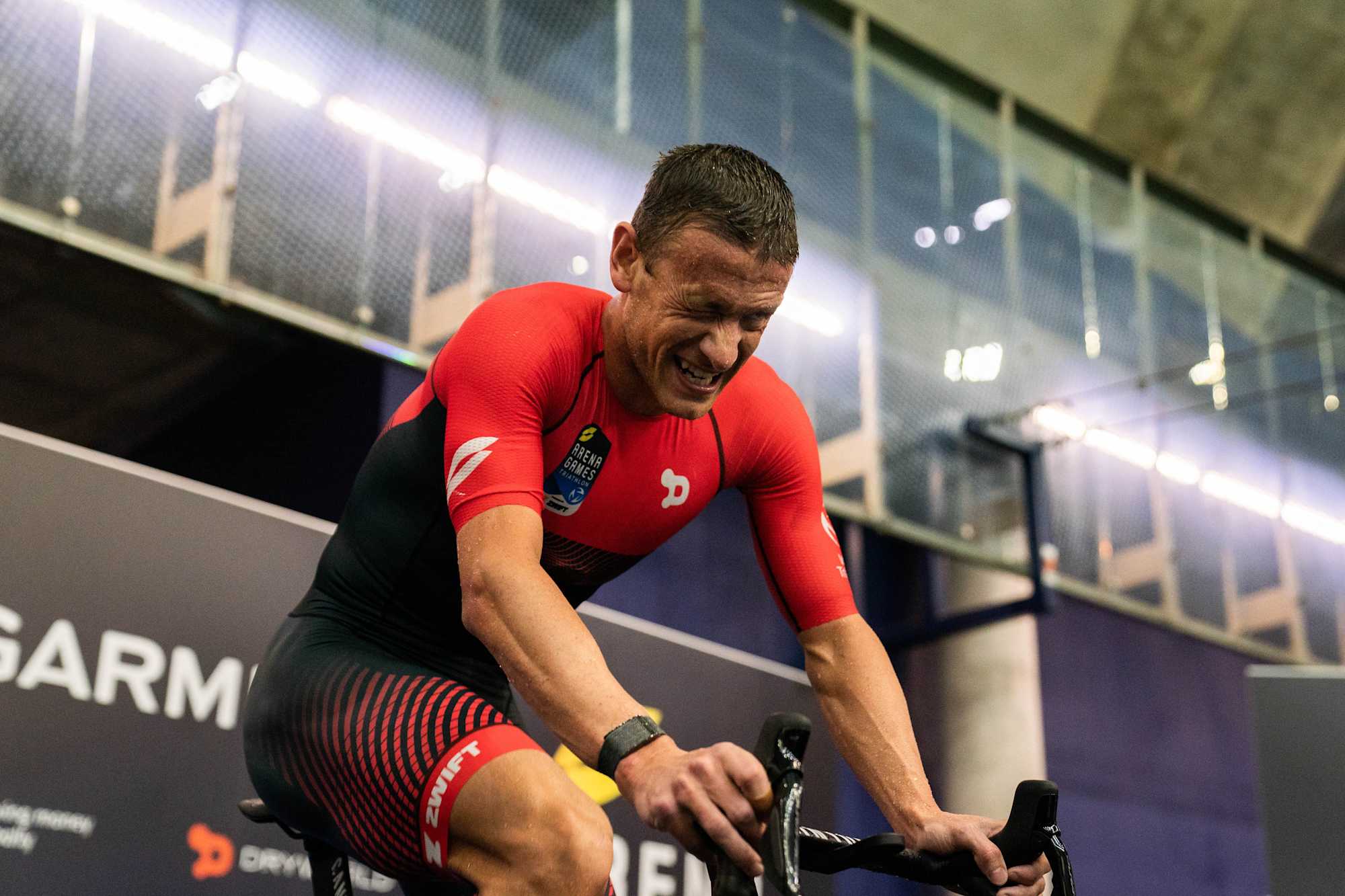VO2 Max: What is it, and how to improve?

WHAT IS VO2 MAX?
VO2 Max is the maximum rate of oxygen your body is able to use when training.
It is one of the most common measures of fitness tracking used. The higher your VO2 Max, the better our oxygen uptake, which often relates – although not always – to better athletic performance.
VO2 max is measured in millilitres of oxygen consumed in one minute per kilogram of body weight (mL/kg/min). It is also called peak oxygen uptake, maximal oxygen uptake, or maximal aerobic capacity.
WHY IS OXYGEN IMPORTANT FOR ENDURANCE ATHLETES?
Oxygen is a key piece in the puzzle for creating the energy we need to exercise.
It is absorbed in the lungs when we breathe, and helps transform fat and glycogen into the molecular fuel adenosine triphosphate (ATP).
As ATP breaks down through chemical reactions, the energy that is released helps cellular processes, including muscle contraction, and the release of carbon dioxide. This is called aerobic metabolism.
DO I NEED A HIGH VO2 MAX AS A TRIATHLETE?
Most high level triathletes will have a high VO2 Max. This is predominantly because they are well trained over years, although some may be genetically predisposed to having a greater oxygen uptake.
A high VO2 Max might be over 80 mL/kg/min for an elite male endurance athlete and over 65 mL/kg/min for an elite female.
But you don’t necessarily need a high V02 Max to be a triathlete, and it’s worth noting that V02 Max is not the only determinant of performance in endurance sports.
A good way of looking at it is that V02 Max represents a ceiling for intensity when training – and all athletes will struggle to operate above 100% of V02 Max for an extended period.
But because in endurance events we operate below this level, how long you can hold a given percentage of V02 Max (your fractional utilization) or ‘your ability to endure’, is likely to be more critical.
Other markers such as movement economy, sustainable lactate threshold and even motivation can also give a guide to performance levels, so it’s worth understanding that just because one athlete’s V02 Max is higher than another’s, they won’t necessarily be superior.
WHAT FACTORS CAN IMPACT VO2 MAX?
Multiple factors can affect V02 Max and few will come as any surprise.
GENETICS.
Unfortunately, or fortunately, we are not all born the same, and some of us will simply have the physiology for better oxygen uptake. While we can change most things in endurance sport, we can’t pick our biological parents.
SEX.
Men tend to have higher V02 Max levels than women in both absolute terms and relative to body mass. On average, males are anatomically bigger with more powerful heart muscles, larger chest cavities and consequently larger lungs.
TRAINING.
Like other fitness markers, V02 Max can be increased by a consistent and progressive training programme. While there may be limits to how much you can boost V02 Max, it should edge up as a natural consequence of improved aerobic fitness.
AGE.
All other things being equal, our V02 Max is likely to peak in our Twenties or Thirties and then steadily drop as we age. Studies suggest this could be around a 10% reduction per decade. However, most of us are atypical in how we live and train through our lives. An untrained athlete who takes to endurance sport aged 50+ could see a spike in their V02 Max because of latent potential.
ALTITUDE.
You may find different measurements for V02 Max when testing at altitude where the air is thinner and oxygen uptake is more difficult.
HOW CAN I MEASURE MY VO2 MAX?
If you are looking to measure your V02 Max, there are a few ways to go about it. It depends how accurate you want to be, and how much time and budget you have.
LAB TESTING
The gold standard is to head to a sports science lab. You’ll typically run on a treadmill or cycle on a static bicycle wearing a facemask as specialist equipment measures the amount of air you breathe in and out when exercising. The test is typically a maximal progressive test that becomes increasingly harder until you can no longer continue.
If heading to the lab isn’t practical or affordable there are other ways you can estimate your V02 Max.
THE ASTRAND TEST
Start by walking/running on a treadmill at 5mph with a 0% grade for 3mins. The incline increases by 2.5% every 2mins until you’re unable to continue.
The following formula is used to calculate V02 Max.
(Time × 1.444) + 14.99 = V02 Max.
For example. If you stopped the test after 15mins 30secs of running, V02 Max would be (15.5 x 1.444) + 14.99 = 37.37 ml/kg/min
HEART RATE RATIO METHOD
Researchers found that by dividing maximum heart-rate by resting heart-rate and multiplying by 15.3 they could get a good approximation of V02 max.
The figures were based on measurements of well-trained men aged 21 to 51, and proved most reliable when based on actual measurement of maximum heart rate, rather than an age-related estimate.
Other tests such as the Cooper test (a 12-minute run) and the Rockport fitness walking test (a one-mile walk test) are further examples used to calculate V02 Max.
ONLINE CALCULATORS
Online calculators use time and distance covered (over 1.5km) to provide a prediction of V02 Max using a formula from Jack Daniels’ 2005 research. For example, if you run 10km in 45mins, the result would be 45.26 mL/kg/min. An online calculator can be found here.
FITNESS WATCHES
Watches and wearables can automatically provide a V02 Max estimate based on your heart-rate. While this may not be 100% accurate, if you compare your readings over time it can help give you a gauge as to how your fitness levels are changing.
WHAT IS A ‘GOOD’ OR ‘BAD’ VO2 MAX VALUE?
There is no defined good or bad V02 Max value because it is relative to your age and sex. However, the following chart may give you a guide as to where you stand.
VO2 MAX TRAINING SESSIONS
Intensive training can be a good way to improve your V02 Max. This would include sessions where your effort is 90% or more of your maximum heart-rate and be labelled as interval, effort, HIIT or fartlek training, where you are pushing the intensity for focused, short bursts.
Studies also show that you shouldn’t neglect base training either. Training at high intensity repeatedly runs the risk of overtraining and injury, so supplementing with easy aerobic workouts to increase total training volume should also help.
For triathletes, either running, biking or swimming are perhaps the easiest way to target V02 Max improvements.
Example Sessions
RUNNING
6 x 1km or 1/2 mile repeats.
Often completed on the track, hard but not maximum effort interval sessions such as these are a staple of many endurance athlete’s training schedules. The rest between intervals can vary but is usually around 60-90sec.
4 x 3mins hill repeats.
Running uphill can be an excellent way to not only boost V02 Max but also improve running form while reducing the risk of injury.
5km / 10km race.
While not an interval set, when racing hard over this distance your heart-rate is likely to be 90% of maximum which can help support V02 Max improvement
CYCLING
5 x 5mins intervals.
Included as part of a longer ride with appropriate warm-up and cooldowns. Heart-rate should be pushing up to 90% or more, with 2mins rest between intervals. If 5mins isn’t manageable, a combination of different intervals can be used. Most athletes can sustain V02 Max efforts for around 3-8mins.
SWIMMING
10 x 100m or 20 x 50m.
Often gauged on perceived effort, 10 x 100m or 20 x 50m hard, should target VO2 Max improvements. Swim easy and/or include drills work either side of this set.
Any form of endurance exercise can be used to improve V02 Max. Rowing or skiing are two of the most popular. The key is to stress your aerobic system so it has a stimulus to adapt and improve.
For more ideas of training sessions check out these swimming, running, and indoor cycling videos.
FAQS:
HOW MUCH CAN YOU IMPROVE YOUR V02 MAX?
It’s tricky to say how much any individual can improve their V02 Max because we all start from different levels of fitness and have different genetic potential. For a rough guide, the untrained athlete may be able to improve by 15-20%, although it could be higher in some cases.
WHAT IS ATP AND WHY IS IT IMPORTANT?
ATP is Adenosine Triphosphate and is the molecule that gives energy to our cells and supports all metabolic activity. Formed from carbon, nitrogen, hydrogen, oxygen, and phosphorus, it has high-energy bonds that when broken (hydrolysed) through chemical reactions release a large amount of energy that’s used for muscle contraction, the transport of proteins and lipids into and out of the cell and various other biological functions.
WHY IS MY VO2 MAX NOT IMPROVING?
There could be a number of reasons why your V02 Max is not improving. The most obvious one is that you’re getting a little older. Once we reach 40, all other things being equal, our V02 Max tends to drop. Other reasons could include not training as productively as previously, or not absorbing the training load adequately. You may also be undertaking the wrong type of training, such as too much high intensity, leaving little chance to recover before the next session.
HOW ACCURATE ARE SMART WATCHES FOR MEASURING VO2 MAX?
Smartwatches that use heart-rate can give a helpful guide as to your V02 Max, but they are unlikely to be the most accurate measure. Firstly, the heart-rate readings need to be accurate, which tend to be more likely with a chest strap, than a wrist-based sensor. Secondly, simply using heart-rate as a proxy is not going to be as accurate as lab testing, which is the gold standard for V02 max measurement
WHAT ARE THE V02 MAX RECORDS (MEN/ WOMEN)?
It’ll come as no surprise that some of the highest V02 Max levels on record have come from world class endurance athletes. The highest value recorded by a male is Norwegian cyclist Oskar Svendsen has recorded 97.5 ml/kg/min. The 1984 Olympic marathon champion Joan Benoit of the USA has a reported V02 Max of 78.6 as the highest women’s value ever recorded. But who has the highest will be slightly contentious as it could depend on the equipment used. Also, not every endurance athlete has their V02 Max tested.
HOW LONG DOES IT TAKE TO IMPROVE V02 MAX?
Depending on the starting fitness level of the athlete, V02 Max may improve after just a few weeks of focused endurance training. A novice athlete is likely to find that the improvements come much faster. Endurance athletes who have years of training behind them and want to improve their V02 Max may still see incremental improvement with focused training.
WHAT IS A NORMAL RESTING HEART RATE?
Our resting heart-rate depends on factors such as our age, genetics, fitness levels and the size and natural rhythm of our hearts. It is difficult to put a number on it, but around 60-100 beats per minute is average for the adult population as a whole. Highly trained endurance athletes tend to have lower heart-rates than this, but it’s not always the case.







